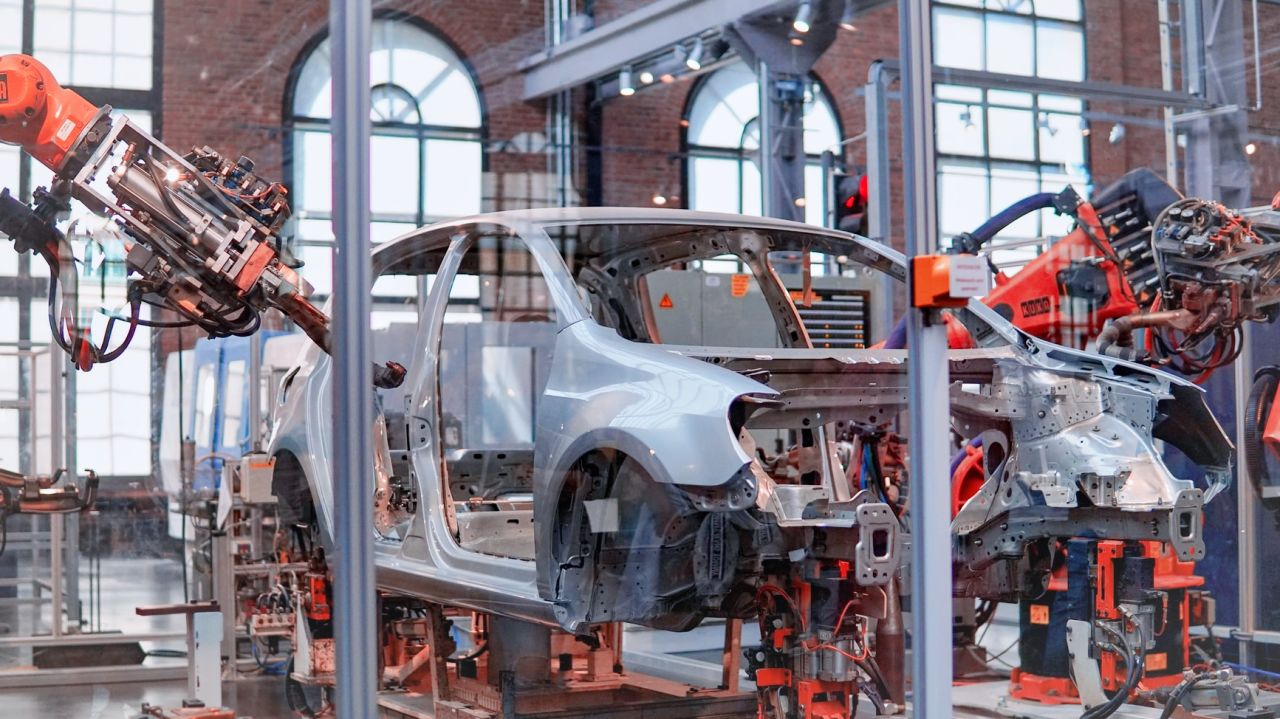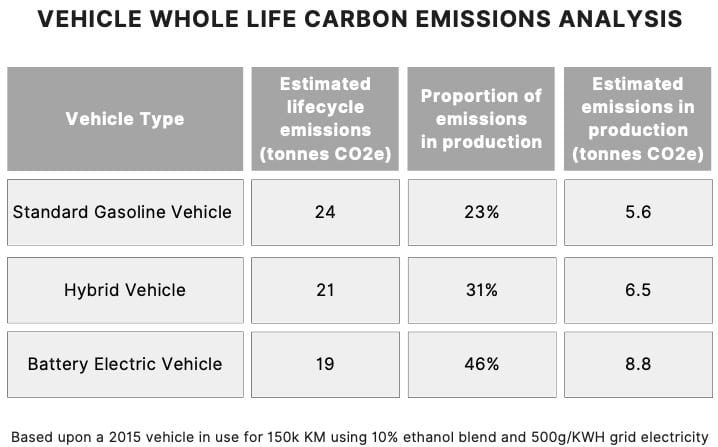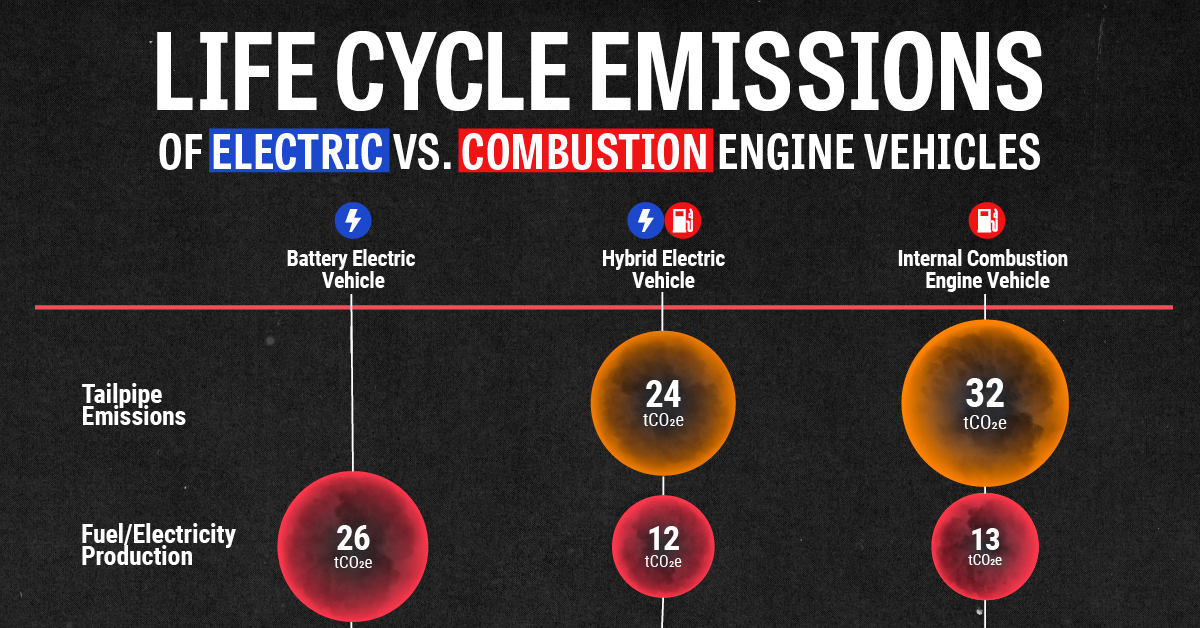With electric cars promoted as eco-friendly alternatives to gas guzzlers, many of us are quick to jump on the green bandwagon. But have you ever paused to consider the environmental expense tied to manufacturing these sleek machines? Let’s untangle this issue, unraveling the truth about the carbon footprint associated with producing electric vehicles. From the mining of necessary minerals to the energy-intensive battery production process, we’ll delve deep to find out if our eco-conscious switch is really as green as it seems. Buckle up for a ride through the unseen carbon emissions lurking in electric car production.
Understanding Carbon Footprint

Before we delve into the specifics of electric car production, let’s take a moment to understand the concept of carbon footprint. Simply put, your carbon footprint is the total amount of greenhouse gases, particularly carbon dioxide, that are emitted into the atmosphere as a result of your activities. This could be anything from the food you eat and the clothes you wear to the way you travel and heat your home.
Think of it like a sort of environmental accounting system. Each action we take in our daily lives, be it taking a flight, eating a burger, or indeed driving a car, incurs a certain carbon ‘debt’. This is quantified using a unit known as a carbon dioxide equivalent (CO2e), which normalizes the impact of various greenhouse gases based on their global warming potential.
In the context of electric cars, we are primarily concerned with the carbon emissions that occur during the production process, as well as those that are associated with the electricity used to charge the vehicle. This is a slightly more complex equation than simply considering the emissions from a conventional vehicle’s tailpipe. It factors in everything from the materials used to make the vehicle, the way those materials are mined and processed, the energy used in manufacturing, and in the case of electric cars, the production and disposal of the battery.
There is a prevailing misconception that electric cars are ‘zero emission’. While it’s true that they don’t emit any tailpipe emissions while in use, a considerable amount of carbon dioxide is released during the production of the vehicle, particularly its battery, as well as the generation of electricity to keep it running. Therefore, as we strive for a sustainable future, it is equally important to minimize the carbon footprint of an electric car’s production process and operation as it is to consider its emissions during use.
That being said, the carbon footprint isn’t the be-all and end-all metric for assessing a vehicle’s environmental impact. Other factors, such as air pollution and resource depletion, also contribute significantly to a car’s overall environmental footprint. Nonetheless, it’s a pretty good place to start. Now let’s move on and explore how electric cars are made, and in the process shed some light on the significant but often overlooked carbon cost of these ‘green’ vehicles.
Production Process of Electric Cars

Electric cars don’t just roll off an assembly line, fully formed and brimming with environmental virtue. They start as piles of raw materials that need to be extracted, processed, and combined in very specific ways. The process for electric vehicles (EVs) is fundamentally the same as conventional cars but with a few key differences, particularly in the production of the battery and motor.
Instead of a combustion engine, electric cars carry a battery, usually lithium-ion, that provides the power. The production of these units can be intensely energy-consuming. Lithium extraction, for instance, involves pumping large amounts of water from underground reservoirs, inducing a brine that is then left to evaporate, leaving behind the desired lithium. Then you have to factor in the energy used in refining, manufacturing, and ultimately recycling the battery.
Next in line is the electric motor – a marvel of simplicity compared to its combustion equivalent. Made up of a rotor, a stator, and a handful of other components, it’s an elegant design with significant environmental advantages. It requires fewer parts, translates to less manufacturing energy used, and thus reduces the carbon footprint.
But it’s not just the motor and the battery. We have the rest of the car to consider: the chassis, body, plastic elements, glass, rubber, and wiring. While these parts contribute to the overall carbon footprint of the vehicle’s manufacture, the same holds true for fossil fuel vehicles too. The fundamentals – metal stamping, welding, painting, assembly – carry across both domains.
What sets electric car production apart for its carbon footprint, besides the battery, is their complex electrical systems. EVs demand a more intricate wiring setup than their conventional counterparts. This requires additional materials and, crucially, added labor input and energy.
In the bigger picture, several other elements factor into the car’s life cycle carbon footprint. Everything from where the raw materials are sourced to the type of energy used in the manufacturing plants plays a significant role. Additionally, the shipping of the completed vehicle to the consumer adds to the emissions.
While this may all sound sobering, remember that once the electric car is up and running, it’s significantly less carbon-intense. Simply put, it’s a larger initial carbon hit for a much healthier long-term payoff. Nevertheless, acknowledging this initial footprint is essential to fully understand the environmental impact of electric cars.
Carbon Emission in Battery Production

When it comes to the amount of carbon released during the production process, electric vehicle (EV) batteries are not exactly saints. Truth be told, the production of lithium-ion batteries largely implicated in powering electric cars comes with its own set of environmental hiccups.
It’s crucial to add context to the picture by starting with how these batteries are built. Lithium, along with exotic metals like cobalt and nickel, forms the core elements of most electric vehicle batteries. Extracting these metals from the earth requires intensive mining processes. Now, picture colossal excavations, monstrous machines, and a vast amount of energy. All this upheaval, unfortunately, translates directly into significant greenhouse gas emissions.
But we’re not done yet. After mining, these metals need to go through a refining process before they’re ready to be used. This refining process further contributes to the carbon footprint as it involves significant energy consumption and chemical processing. Let’s not forget transportation. Oftentimes, the raw materials and finished products are transported around the globe, which invokes additional carbon emissions.
What does this mean in numbers? A Swedish study found that producing a battery for an electric car can emit as much as 17.5 tons of CO2, which is equivalent to the emissions of driving a gas-powered car for eight years. Staggering, isn’t it?
Now, if you’re waiting for a ‘but’ – it’s coming. This sizeable carbon emission is predominantly a front-loaded cost. Which means, after the initial production phase, the electric vehicle begins to redeem its higher production emissions as it is driven and recharged with clean power over time.
Overall, it’s not all rosy for electric cars on the battery production front. While they certainly offer environmental advantages over traditional gasoline-powered cars, there is a significant carbon cost upfront that needs to be recouped during their lifespan. This implies that it’s not just about having an electric car, but also about how it’s used and recharged.
The good news is that manufacturers are becoming more aware and proactive towards leveraging cleaner and more efficient productions methods. Lithium recycling, reduced reliance on rare metals, and greener mining methodologies are among the promising measures being incorporated.
The onus, thus, falls upon us to ensure we power our electric dreams sustainably, bearing in mind that a clean start usually results in a greener finish.
Comparative Analysis: Electric Cars vs Internal Combustion Engine Cars

The real carbon story of the automobile world lies in the operational phase. That’s where we bring the two heavyweights head-to-head: the electric car versus the Internal Combustion Engine (ICE) car. Now, before pitching these foes against each other, let’s acknowledge a plain fact: both these transportation means have carbon footprints. But, the compass of environmental friendliness truly starts swinging when we examine the depth and breadth of these footprints.
Electric cars, as the gladiators of the green movement, are propelled by electricity and leave zero tailpipe emissions in their wake. Meanwhile, the ICE cars, or rather their tailpipes, are notorious for belching out carbon dioxide every time they burn a liter of fuel. Interestingly, the exhaust isn’t just a single puff of emissions but a cocktail of numerous ones. We’re talking CO2, nitrogen oxides, and even harmful particulates. Armed with this knowledge, the scales seem automatically tipped towards the electric vehicles (EVs), right? Not so fast.
While EVs might be cleaner on the road, their dirty little secret is the manufacturing phase. Especially that villain of the whole EV narrative: the battery. A hefty portion of an electric car’s carbon footprints is stamped before it even escapes the factory gates, thanks to the energy-intensive process of battery production. The result? A higher upfront carbon footprint for electric cars, compared to their ICE counterparts.
But don’t count EVs out yet. As they rack up mileage, electric cars start to show their environmental mettle. Each mile driven in an electric car is a cleaner mile than in an ICE car, especially if the electricity grid that charges it leans more to renewables than fossil fuels. Over time, and quite a number of miles, the EVs can offset their creation emissions and chalk up less lifetime CO2 emissions compared to ICE vehicles.
In the long run, the overall carbon footprint primarily hinges upon the energy source. If your area’s grid power comes mostly from coal, the ICE cars may be the greener option. But if your grid is dominated by renewables, driving an electric car could be as revitalizing to the environment as a rainfall in a desert.
It’s clear there’s no auto type that’s purely angel or devil here, only shades of environmental impact. Meanwhile, the electric car vs ICE car battle continues to be an epic saga with a pending final chapter. Evolution and innovation are ongoing, holding immense promise for reducing carbon footprints across the board. And who knows? Maybe the world will discover a cleaner, smarter way to get from point A to point B that we can’t even think of yet. We can always hope, right? After all, future chapters in our transportation story are still being written… and rewritten.
Carbon Emission in Electric Car Usage

Electric car usage has become increasingly prominent in public discourse as the road to a green future. Yet the seemingly immaculate mode of transportation isn’t as pure as many ardently believe, particularly when it comes to carbon emissions. While it’s accurate that electric cars emit zero exhaust fumes – making them a breath of fresh air, especially in congested city streets – this does not mean they are entirely ’emission-free’.
The dirty little secret lurking behind electric vehicles (EVs) is that the electricity used to charge them isn’t always sourced from renewable energy. In many parts of the world, power is still largely generated by burning fossil fuels like gas and coal. This adds significant amounts of carbon into the atmosphere, effectively contradicting the ‘zero-emissions’ claim made by many EV proponents.
This paradox is often dubbed the “long tailpipe” theory. It’s an argument that factors in the indirect emissions produced from the “well-to-tailpipe” lifecycle of an EV, including those generated during power production and transportation to charging stations.
In essence, the carbon footprint of using an electric car can be pretty large if the electricity comes from carbon-intensive energy sources. However, this bleak outlook can change considerably when electricity is derived from sustainable sources. Throw a robust solar panel system into the mix and voila – you’re cruising on sunshine, literally.
Yet, throwing caution to the wind, does not make the challenge disappear. Achieving a truly green charge on a notable scale is currently impeded by inadequacies in renewable energy and grid infrastructure in many regions. Not to mention the logistic and economic hurdles involved in making a global shift to cleaner energy.
Moreover, the energy consumption during the vehicle lifecycle must also take into account battery recharging, energy used for cooling or heating the vehicle, and other factors. These can also contribute to the overall greener footprint of electric vehicles, albeit indirectly.
To make matters a bit complicated, every electric vehicle does not consume the same amount of energy. Different models vary widely in their energy efficiencies. Some soak up electricity like a high-performance V8 guzzles gasoline, while others are more frugal energy consumers, akin to economy-class cars.
In conclusion, electric car usage can still reduce carbon emissions compared to traditional vehicles – given the right circumstances. However, the extent of the reduction is significantly influenced by the cleanliness of the electrical energy source used. Thus, while electric cars are a positive step forward, the overall sustainability roadmap calls for a more comprehensive and multi-faceted approach.
FAQs
What is the Carbon Footprint of Producing an Electric Car?
What about the emissions after production?
So, in the long run, is an electric car worth it?
Conclusion
While electric cars keep city air clean and cut dependence on oil, the process of production is significantly carbon-intensive. Yet, their lifetime emissions are lower than those of traditional cars. The production’s carbon footprint can be further mitigated through the adoption of renewable energy sources such as wind and solar for manufacturing facilities. In the grand parade of car evolution, electric vehicles are an important step but are not the panacea to our climate woes.
